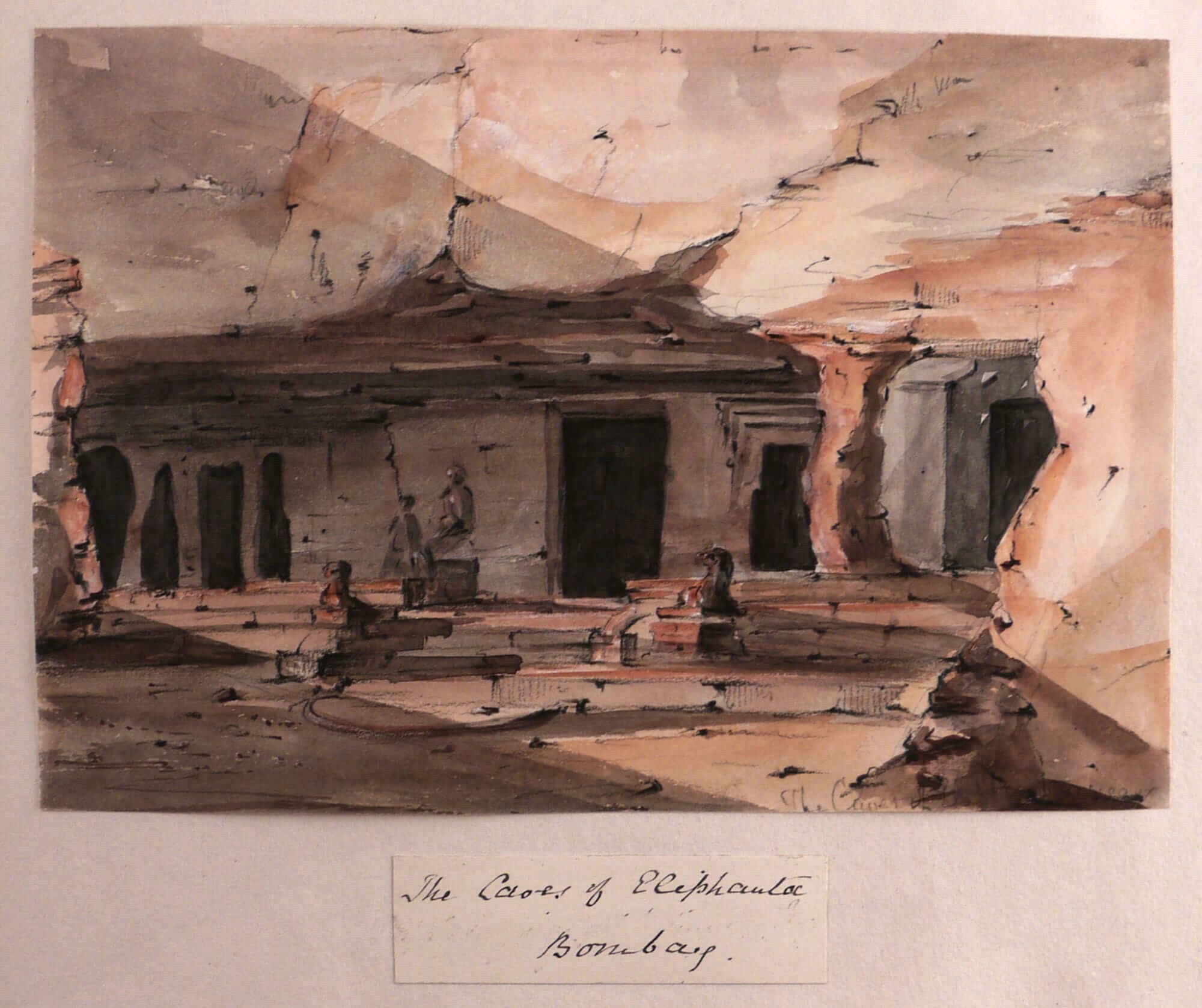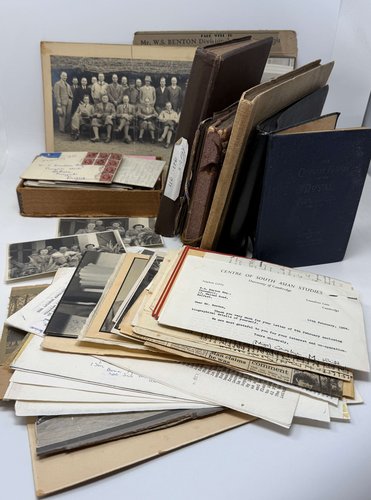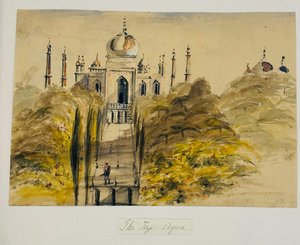
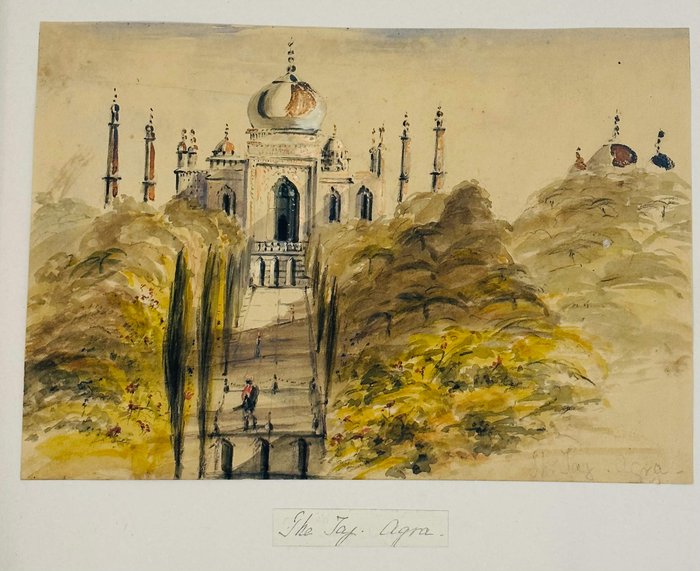
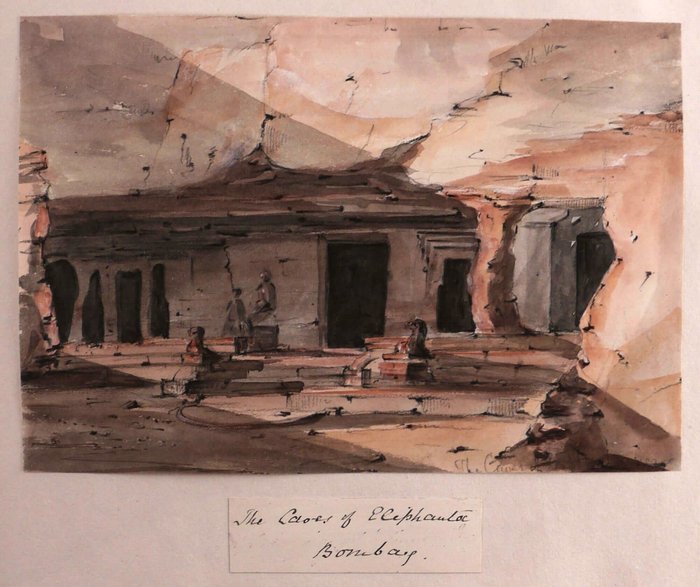

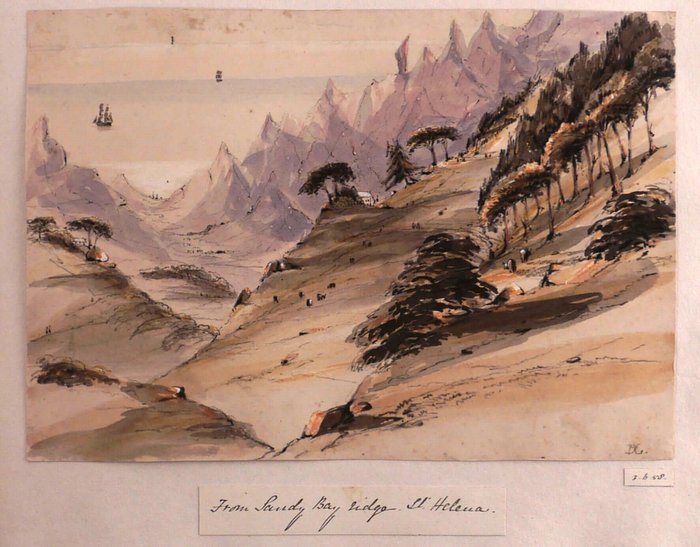






.jpg.700x700_q85_autocrop_replace_alpha-%23FFFFFF.jpg)
#MB58
Ca. 1857-8
Oblong Small Folio (ca. 25,5x32,5 cm). 12 beige album leaves. With ten original watercolours, each ca. 17x25 cm (7x10 in) mounted on the album leaves with original black ink captions mounted below. Five watercolours initialled "D.S.G." in pencil and four variously dated in 1858. Period style dark green gilt tooled half straight-grained morocco with dark green cloth boards. Overall a very good album.
Attractive collection of ten original watercolours, made by a Captain of Royal Artillery, Dominick Sarsfield Greene during his service in India at the time of the Indian Rebellion of 1857 and shortly after.
“Dominick Sarsfield Greene served with the Royal Artillery between 1846-1884, eventually holding the rank of Major General on his retirement. Whilst serving in India he was appointed as A.D.C. to Major General Dupuis, commander of the Royal Artillery in India. Sarsfield Greene saw action during the second relief of Cawnpore whilst in command of the bullock field battery following the second battle of Cawnpore on the 26th and 27th of November, 1857” (Christies).
In 1859, a London publisher Thomas Maclean issued a collection of twenty lithographs with views of India and battle scenes of the suppression of the 1857 rebellion after Greene’s original drawings ("Views in India, from drawings taken during the Seapoy Mutiny"). Our watercolours were created at the same time or slightly after the ones comprising Maclean’s set of lithographs – during Greene’s service in India and on his return voyage to England. The watercolours show the Western Ghats mountain range as seen from Mumbai, the entrance to the Elephanta Caves (Mumbai harbour), Gibraltar Hill as seen from Rawalpindi in the North West Frontier (now Pakistan), Taj Mahal (Agra), Jama Masjid Mosque (Delhi), the environs of Constantia (Cape of Good Hope), Saint Helena Island, Sao Vicente and Santo Antao Islands (Cape Verde).
Overall an attractive collection of early original watercolours of India, dating back to the Indian Rebellion of 1857.
Provenance: Sir Alexander Moncrieff (1829-1906) [Royal Artillery officer and engineer, amateur artist], and thence by descent.
A list of watercolours: Ghauts. Bombay - Sunset; The Caves of Elephanta, Bombay; “Gibraltar” Hill from Rawul Pindee - Sunset; The Jumna Musjid - Delhi; The Taj, Agra; On the road to Constantia [initialled “D.S.G.,” dated “22.5.58”]; From Sandy Bay Ridge, St. Helena [initialled “D.S.G.,” dated “3.6.58”]; The Man's Head Rock - St. Vincent [initialled “D.S.G.”]; Bird Island, St. Vincent – St. Antonia in the distance [initialled “D.S.G.,” dated “20.6.58”]; The Harbour, St. Vincent, Cape Verde [initialled “D.S.G.,” dated “19.6.58”].
“Indian Mutiny, or Sepoy Mutiny or Indian Rebellion of 1857, (1857-58) Widespread rebellion against British rule in India begun by Indian troops (sepoys) in the service of the English East India Company. The rebellion began when sepoys refused to use new rifle cartridges, which were thought to be lubricated with grease containing a mixture of pigs’ and cows’ lard and thus religiously impure for Muslims and Hindus. The soldiers were shackled and imprisoned, but their outraged comrades shot their British officers and marched on Delhi. The ensuing fighting was ferocious on both sides and ended in defeat for the Indian troops.
The immediate result was that the East India Company was abolished in favour of direct rule of India by the British government; in addition, the British government began a policy of consultation with Indians. British-imposed social measures that had antagonized Hindu society (e.g., a proposed bill that would remove legal obstacles to the remarriage of Hindu women) were also halted” (Britannica.com).


